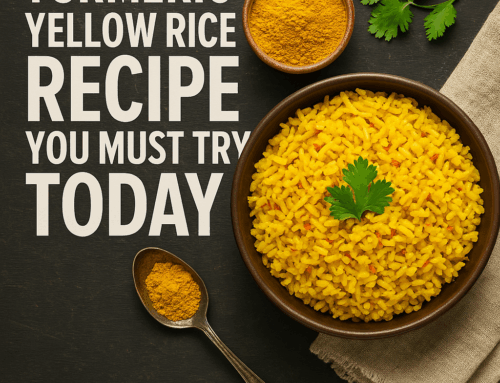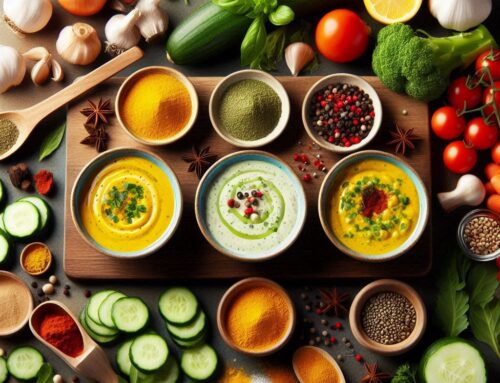
Culinary Uses of Turmeric Leaves: A Flavorful Secret
One of the most popular uses is as a natural wrapper for food. In Indonesian cuisine, they are often used to wrap seasoned fish, meat, or rice before grilling or steaming. This technique, seen in dishes like pepes ikan (spiced fish wrapped in turmeric leaves), not only infuses the food with a mild, peppery flavor but also keeps it moist and tender. The leaves act as a fragrant, edible parchment, adding depth without overpowering the dish. Imagine unwrapping a steaming parcel of fish, the scent of turmeric mingling with spices—a true delight for the senses.
In Thai cooking, they are sometimes added to curries and soups for an extra layer of flavor. Their slightly bitter, herbaceous notes complement rich, coconut-based sauces, creating a balanced and aromatic dish. For example, a green curry with a hint of turmeric leaf can elevate the familiar flavors to something extraordinary. Additionally, the leaves can be finely chopped and used as a garnish or mixed into salads for a fresh, green twist that surprises the palate.
- Infused Oils or Vinegars: Steep the leaves in oil or vinegar to capture their subtle essence, perfect for drizzling over salads or roasted vegetables.
- Rice or Dumpling Wraps: Use them to encase sticky rice or dumplings, imparting a fragrant, flavorful casing that’s as beautiful as it is delicious.
- Stir-Fries and Sautés: Toss chopped leaves into a hot pan for a hint of earthiness that pairs well with garlic and ginger.
Medicinal Properties of TurmericLeaves: Nature’s Healing Touch
In traditional Ayurvedic and Southeast Asian medicine, turmeric leaves have been used for centuries to treat various ailments. Here are some of their key medicinal uses, grounded in both tradition and emerging science:
- Wound Healing and Skin Care: Turmeric leaves are often applied as a poultice to minor cuts, burns, and bruises. Their anti-inflammatory and antimicrobial properties help speed up healing and prevent infection. In rural communities, you might find a grandmother crushing fresh leaves to soothe a child’s scraped knee. Some even use them in natural face masks to reduce acne and brighten the complexion, harnessing their gentle yet effective qualities.
- Digestive Health: Just like the root, they can aid digestion. They are believed to stimulate bile production, which helps break down fats and alleviate bloating or indigestion. Drinking a tea made from turmeric leaves—simmered gently in hot water—is a common remedy for soothing an upset stomach after a heavy meal.
- Pain Relief: The anti-inflammatory compounds in turmeric leaves make them effective for reducing pain and swelling. In traditional practices, the leaves are sometimes wrapped around sore joints or muscles to relieve discomfort from sprains or arthritis. Picture a farmer in Thailand binding a sprained ankle with turmeric leaves, a simple yet powerful remedy passed down through generations.
- Respiratory Support: They are also used to ease respiratory issues. Inhaling the steam from boiled turmeric leaves or drinking a warm infusion can help clear congestion and soothe coughs, offering comfort during cold season.
Incorporating them into your wellness routine—whether through teas, poultices, or even as part of a balanced diet—can be a gentle, natural way to nurture your body. They’re a reminder that nature often provides simple solutions to life’s discomforts.
Cultural Significance of Turmeric Leaves: A Symbol of Tradition
In Hindu traditions, turmeric is considered sacred, and its leaves are no exception. During the haldi ceremony, a pre-wedding ritual in Indian weddings, turmeric paste is applied to the bride and groom to purify and bless them before the marriage. While the root is the star of this paste, they are sometimes used as a base or wrapper for the mixture, adding an extra layer of symbolism. The leaves’ vibrant green color represents life and renewal, a fitting emblem for the start of a new chapter. Imagine the laughter and chatter as family members gather to anoint the couple, the air filled with the earthy scent of turmeric.
In some regions, turmeric leaves are also used in religious offerings or as decorations during festivals. In Bali, for example, they are woven into intricate designs for ceremonial purposes, showcasing the skill and creativity of local artisans. Their association with the turmeric plant makes them a symbol of growth, fertility, and good fortune—values cherished across cultures.
Exploring the cultural significance of turmeric leaves offers a window into the traditions that have shaped their use. If you ever have the chance to attend a Hindu wedding or a Balinese ceremony, watch for these leaves—they’re more than just greenery; they’re a bridge to history and meaning.
How to Grow and Harvest Turmeric Leaves: A Gardener’s Guide
Here’s a detailed guide to growing and harvesting turmeric leaves:
- Choosing the Right Conditions
Turmeric plants crave warmth, humidity, and well-draining soil. They thrive in temperatures between 68-86°F (20-30°C) and need at least 6 hours of sunlight daily. If you’re in a cooler region, grow turmeric in pots that can be moved indoors during winter, ensuring they stay cozy and happy. - Planting Turmeric Rhizomes
Turmeric grows from rhizomes, the root-like structures you might recognize from the grocery store. Plant them in spring, about 2 inches deep in rich, loamy soil enriched with compost. Space the rhizomes 12-18 inches apart to give the plants room to spread. Water consistently to keep the soil moist but not soggy—think of it as mimicking a tropical rainforest. - Caring for the Plant
Turmeric plants reach about 3 feet tall, with large, lance-shaped leaves that fan out dramatically. Fertilize every few weeks with a balanced, organic fertilizer to boost growth. Keep an eye out for pests like aphids or spider mites, which can be managed with a spritz of natural insecticidal soap. With a little TLC, your turmeric plant will flourish. - Harvesting Turmeric Leaves
You can start harvesting turmeric leaves once the plant is established, typically 2-3 months after planting. Opt for young, tender leaves—they’re the most flavorful and versatile. Snip them at the base with scissors, leaving the plant intact to keep growing. It’s like giving your plant a haircut while reaping the rewards. - Storing Turmeric Leaves
Fresh turmeric leaves stay good in the refrigerator for up to a week. Wrap them in a damp paper towel and tuck them into a plastic bag to preserve their moisture. For longer storage, freeze them whole or dry them for use in teas or spice blends—perfect for year-round enjoyment.
Recipes Using Turmeric Leaves: Bringing the Magic to Your Kitchen
1. Turmeric Leaf-Wrapped Grilled Chicken
- 2 boneless chicken thighs
- 2 fresh turmeric leaves (or banana leaves as a substitute)
- 1 tablespoon coconut oil
- 1 teaspoon turmeric powder
- 1 teaspoon coriander powder
- 1 teaspoon chili paste (adjust to taste)
- Salt and pepper to taste
- In a bowl, mix the coconut oil, turmeric powder, coriander, chili paste, salt, and pepper. Coat the chicken thighs and marinate for at least 30 minutes.
- Lay out a turmeric leaf, place a chicken thigh in the center, and fold the leaf to wrap it securely, tucking in the edges.
- Grill over medium heat for 10-12 minutes per side, or until the chicken is cooked through (internal temperature of 165°F/74°C).
- Unwrap and serve with steamed rice, savoring the earthy aroma the leaves impart.
2. Turmeric Leaf Tea
- 2-3 fresh turmeric leaves
- 2 cups water
- 1 teaspoon honey (optional)
- A slice of lemon (optional)
- Rinse the turmeric leaves and tear them into smaller pieces to release their flavor.
- Bring the water to a boil, add the leaves, and simmer for 5-7 minutes.
- Strain into a cup, adding honey and lemon if you like a touch of sweetness and zest.
- Sip slowly and feel the warmth spread through you.
3. Bonus: Turmeric Leaf Rice
These recipes are just a starting point. Let turmeric leaves inspire you to experiment—whether it’s a new marinade, a soup infusion, or a creative garnish, their magic lies in their adaptability.
Turmeric Leaves vs. Turmeric Root: Understanding the Differences
Aspect | Turmeric Leaves | Turmeric Root |
|---|---|---|
Flavor | Mild, earthy, slightly bitter | Strong, warm, slightly bitter |
Culinary Uses | Wrapping food, garnishing, infusing | Curries, spice blends, teas, supplements |
Medicinal Uses | Wound healing, digestive aid, pain relief | Anti-inflammatory, antioxidant, immune booster |
Nutritional Content | Rich in essential oils, some curcuminoids | High in curcumin, manganese, iron |
Preparation | Used fresh or dried | Typically dried and powdered |
Both have their place, but turmeric leaves shine when you want subtlety and a hands-on connection to the plant. They’re less about intensity and more about nuance, offering a fresh perspective on turmeric’s gifts.






